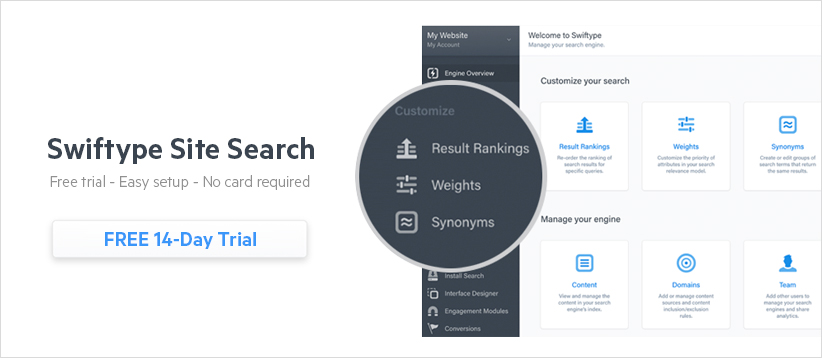In 2009, Google’s Avinash Kaushik wrote about the importance of site search analytics, going so far as calling them “life altering”. At that time, Kaushik argued that two major sites were driving users towards search bars: Amazon, because of it’s massive selection, and Google, because of how many users begin browsing with a global Google search. Because these sites have such a powerful influence over users’ expectations, Kaushik pointed out that more and more people “ignore our lovingly crafted navigational elements and jump to the site search box,” when they arrive on a website – a trend which generates invaluable data about user intent for site owners.
Eight years later, these websites have only grown in importance, meaning that Kaushik’s argument is even more important and more relevant than ever before. This begs the question: given this steady stream of incoming data, what analytics should site owners look for from their search bars? Although the answer to this question will vary based on the specific use case of your website, here are some of the key questions that your site search analytics should help you answer:
- What are the most common queries? This seems obvious, but site owners should pay close attention to their top queries because they offer a looking glass into the precise wants and needs of site visitors. Queries are, after all, user generated, so they allow you to listen to your users in a way that no other analytics can.
- What are users searching for but not finding? In other words, what are the most common queries that return no results? This data is highly actionable, since you can either create content to meet these users’ needs or reconfigure your results to provide answers and prevent users from hitting dead ends.
- What percentage of site visitors are using search? How often is search used relative to the navigation buttons? Aside from helping you get a clear sense of just how valuable search navigation is for users, you should track this statistic over time to see user behavior patterns change in response to any updates you make on your website.
- How do conversion rates differ for searchers vs. non-searchers? If your analytics tell you that users who perform searches are more likely to convert than users who don’t, you should reconfigure your website to feature search as a more prominent navigational tool.
- What pages are users searching from most? This will give you a sense of what pages are most confusing. It’s a safe assumption that if a user can’t find the information that they are looking for on a certain page, they will use the search bar to try and find it.
- What autocomplete options are most popular? When a user chooses an item from the autocomplete dropdown, this is a clear indication of what they are hoping to find for that query. Use this data to customize search results and autocomplete display so that these results are closer to the top.
When you configure your website’s analytics, make sure you’re getting all this information. As we stated above, internal search bars provide a unique opportunity to directly listen to your users – and this valuable information should not go to waste.
If you’d like to learn more about site search analytics, read Swiftype’s white paper: Understanding Site Search Analytics, which provides industry benchmarks on important metrics and offers A/B testing ideas to optimize search for conversions.












